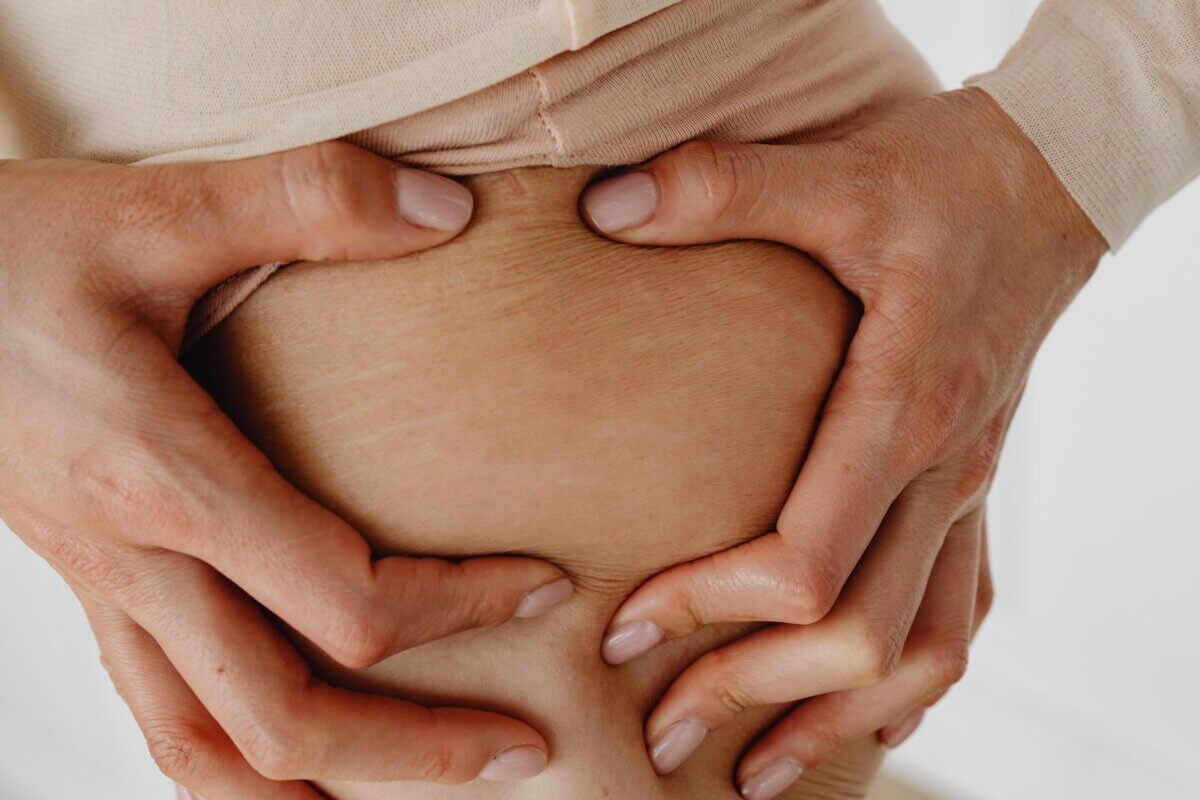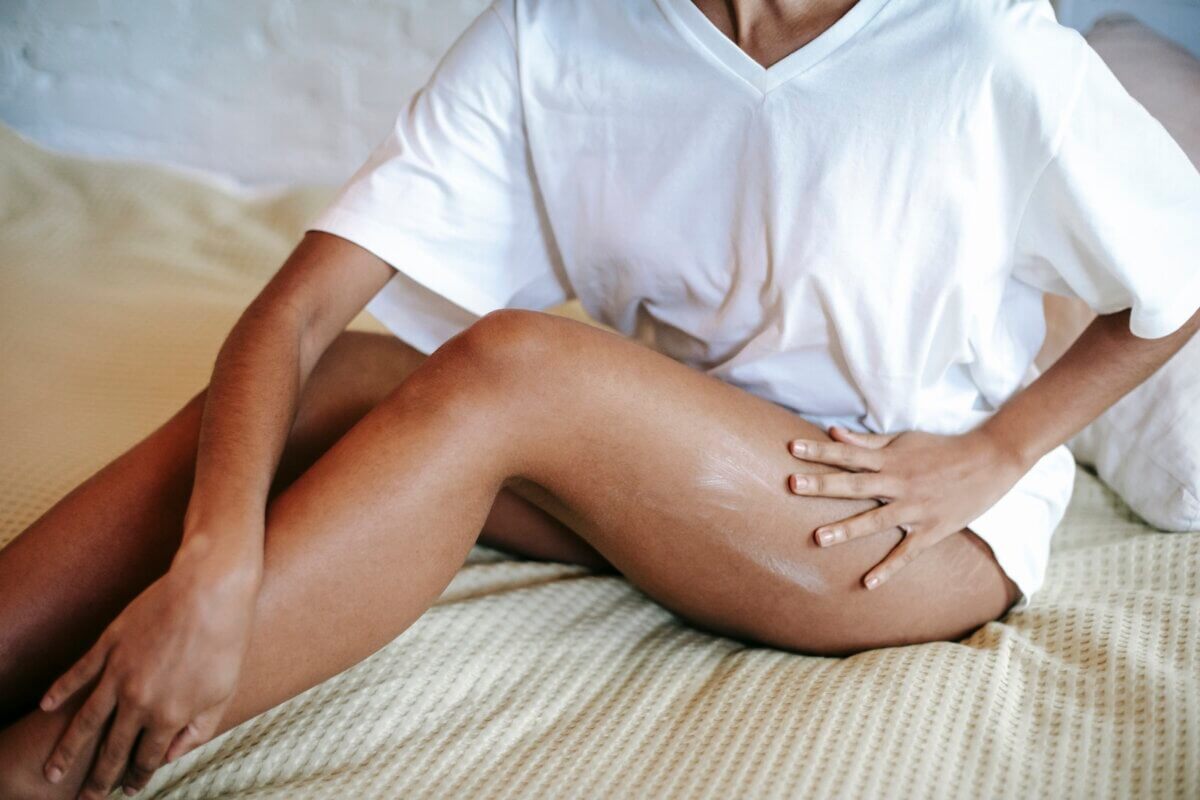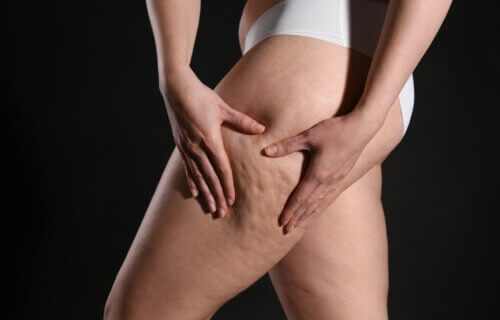When it comes to health, there’s another “C-word” besides cancer — and that’s cellulite. Mention it and you might elicit guttural sounds from the throats of the people around you. However, what can someone do about those dimples and depressions on the skin of the thighs, hips, and buttocks?
One website claims that foods that increase hydration, boost antioxidants, and flush toxins (no such thing) may reduce cellulite. The truth is that you could suffer water intoxication, and your cellulite wouldn’t budge.
Another website urges people to browse the pricey, cellulite-fighting inventory of elite department stores. There are potions to drink, pills to pop, lotion to rub on, and devices that allegedly vibrate away that cottage cheese appearance.
There are aesthetic salons that also promise transformation for the “mere price” of a college education. Good luck getting an appointment – they are all booked up.
All these, and most other methods promising cellulite reduction, have one thing in common – they don’t work, or there may be only slight, temporary improvement. Over time, the skin reverts to its pretreatment appearance. Some newer methods of treatment, though, are showing promise.
So, is there any way of actually getting rid of cellulite? In June 2023, the Aesthetic Surgery Journal Open Forum published “Cellulite: Current Understanding and Treatment.” Let’s examine the current state of cellulite research from a medical perspective.
What is cellulite?
Cellulite is a skin condition that affects an estimated 80 to 90 percent of women after puberty. It shows up as uneven surface changes of the skin, especially in areas of the body that tend to store fat, such as the thighs, buttocks, and hips. The condition causes dimpling, dents, or nodulation, which gives the skin an appearance that is like cottage cheese or orange peel.
Although cellulite is a painless condition, because of its unappealing appearance, cellulite is associated with considerable psychosocial distress, anxiety, and diminished quality of life. Many women seek treatment. In 2021, more than 86,000 minimally invasive cellulite treatments were performed by surgeons from the American Society of Aesthetic Plastic Surgeons.

There are numerous treatments for cellulite. Treatment remains a challenge, however, partly because it is a complex disorder with a unique way of developing, and partly because of the lack of effective treatments.
Little is known about the number of people with cellulite, as well as the risk factors for its development because there is a shortage of data. Women of all races and ethnicities are affected, although Caucasians are more susceptible than Asians or African Americans. Cellulite usually develops between the ages of 20 and 30, although it can develop at any age after puberty.
Much of the process of cellulite development is a mystery, but the study of cadavers reveals that a disorder of anatomy is the culprit. Underneath the skin (dermis) is a layer of fat and collagen (subcutaneous tissue.) Now, think about a layer of fishnet stockings between the dermis and subcutaneous tissue. The thin threads are called septa, some of which are longer than others. An increase in body fat shows fat lobules squishing through the more elastic long septa, outward toward the dermis, while the shorter septa are anchored, pulling inward. The imbalance of forces is thought to create an uneven surface of the overlying skin.
Estrogen has a significant role in forming cellulite, as do high-estrogen states, such as pregnancy, nursing, chronic oral contraceptive use, or hormone replacement therapy in postmenopausal women. These hasten the progression of cellulite.
The following factors are associated with the risk of developing cellulite:
- Gender
- Age
- Genetics
- Race
- Increased subcutaneous fat
- High carbohydrate diet
- Sedentary lifestyle
- Pregnancy
- Alcohol consumption
Experts have developed several scales for the severity of cellulite, with larger numbers indicating greater severity. The numbers quantify the effectiveness of treatment. The larger numbers, however, serve to make a condition that is of no physical threat even more psychologically distressing.
| Item | Cellulite severity description |
| No. of depressions |
0 = no depressions |
| Depth of depressions |
0 = no depressions |
| Type of skin surface changes |
0 = no raised areas |
| Skin laxity |
0 = absence of laxity |
How can you treat cellulite?
Treatment of cellulite involves targeting various steps and pathways believed to contribute to the formation of cellulite. Although combination therapies have been tried, no permanently effective treatment or combination of treatments has been identified.
What about lifestyle modifications?
Lifestyle modification is the major step in treatment for genetically predisposed individuals and in preventing the worsening of cellulite. Excess weight increases the appearance of cellulite. In some people, weight loss and maintaining the loss can reduce cellulite. A diet with low fat and sodium content, exercise, and restricting smoking and alcohol are recommended for both cellulite management and to improve general health.
Exercise is an essential treatment for cellulite, to prevent an increase in body fat. Also, regular exercise is recommended to maintain muscle mass.

Do topical treatments work?
Most topical preparations are available as over-the-counter gels or creams. The main ingredients are caffeine, methylxanthines, retinol, ascorbic acid, alpha-bisabolol, Carica papaya extract, other plant extracts, vegetable oils, urea, and squalene. These therapies are said to work by causing decreased fat production, improvement of circulation, decreased inflammation, and increased fat breakdown. Usually, several substances with different mechanisms of action are combined in a formulation. Caffeine is used in topical preparations because of its lipolytic (breaking up fat) effect.
More evidence from larger clinical trials is necessary for establishing specific topical formulations for the treatment of cellulite.

Are laser and light treatments for real?
Laser energy penetrates the dermis or subcutaneous tissue depending on its wavelength. Local heating of tissue improves microcirculation and collagen remodeling. A multicenter study involving 37 patients using the most recently developed laser, called 1140 NM Nd:YAG, resulted in high satisfaction scores for both the physician and patient and was sustainable one year after treatment.
What is subcision?
Subcision is advised for cellulite depressions present at rest only, not for depressions that are visible during muscle contractions. This surgical technique severs the fibrous septal bands tethering the dermis to the subcutaneous adipose tissue. With the severing of the fibrous septa, biomechanical forces within the subcutaneous layer are redistributed, and fat lobules are also redistributed, into spaces created by the procedure. Fat protrusion is lessened, resulting in a smoother skin surface. Subcision can be performed manually, by a plastic surgeon, or it can be vacuum or laser-assisted. More recent techniques include chemical subcision using collagenase enzyme injections, and acoustic subcision.
How do dermal fillers work?
Calcium hydroxyapatite and poly-L-lactic acid (PLLA) are used to smooth the skin affected by cellulite. It also helps to increase skin thickness to make it harder for fat to dimple through the skin.
Asterix, another filler, was reported to show notable skin tightening and increase in skin density and thickness of the abdominal skin, making it more difficult for lobules to form.
PLLA is a biologic filler that stimulates the body’s own collagen production, tightening the skin. A study involving 24 patients, when combined with subcision, showed sustained improvement in a two-year follow-up assessment.
Can you break up cellulite with ultrasound waves?
High-frequency sound waves delivering acoustic energy to increase tissue shrinkage, and induce collagen and elasticity, have been in use for body sculpting. The surface skin is heated to 60–70°C, resulting in tissue coagulation which activates the body’s wound healing process. It also causes collagen contraction, creating short and thick fibrils, and stimulates the production of new collagen.
High-frequency ultrasound, used in combination with vacuum drainage, suction, and massage, has shown mild improvement in abdominal cellulite. One study showed a significant reduction in abdominal girth, seen with ultrasonic break-up of fat. A combination of both radiofrequency and ultrasound showed improvement in abdominal cellulite. Overall, there is no convincing evidence to suggest that ultrasound alone can significantly reduce cellulite.
You might also be interested in:
- Best Skin Tightening Cream: Top 5 Firming Lotions Most Recommended By Experts
- Beauty obsession? People spend 4 hours a day trying to enhance their appearance
- Best Anti-Cellulite Creams: Top 5 Smoothing Moisturizers, According To Beauty Experts

